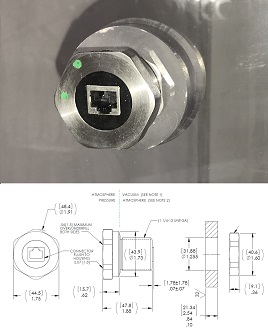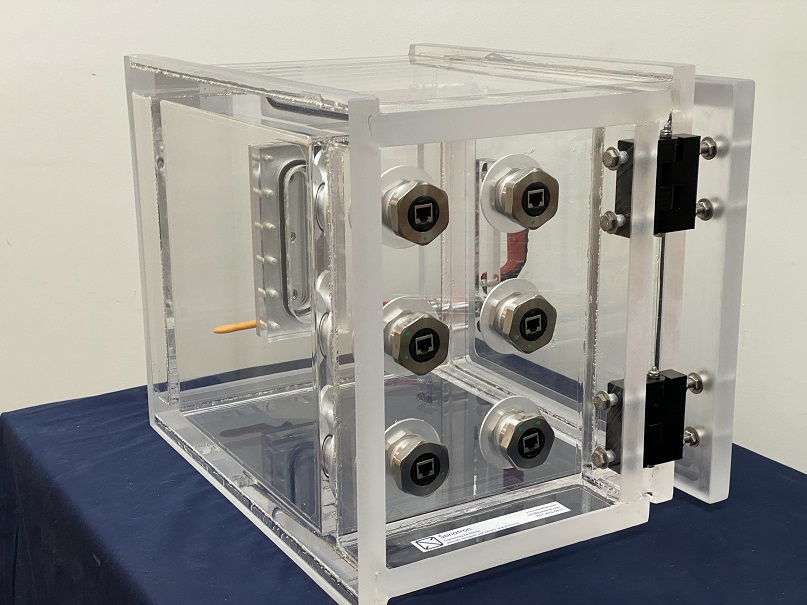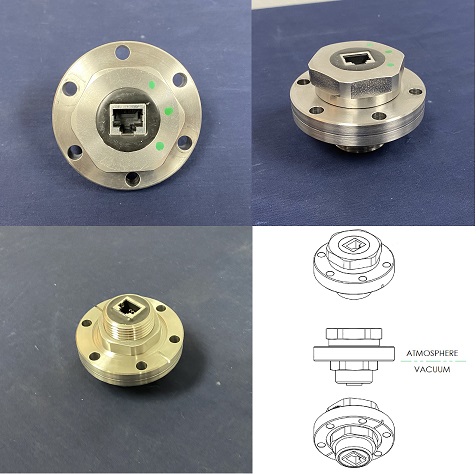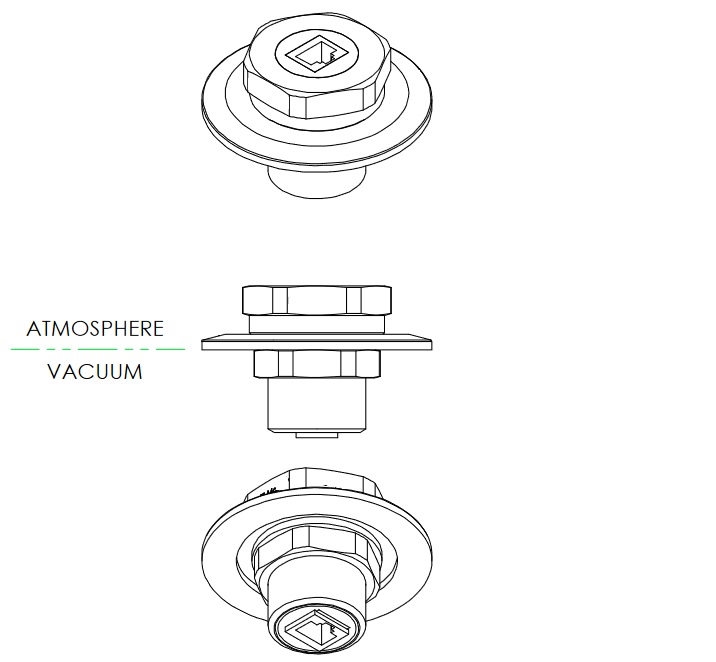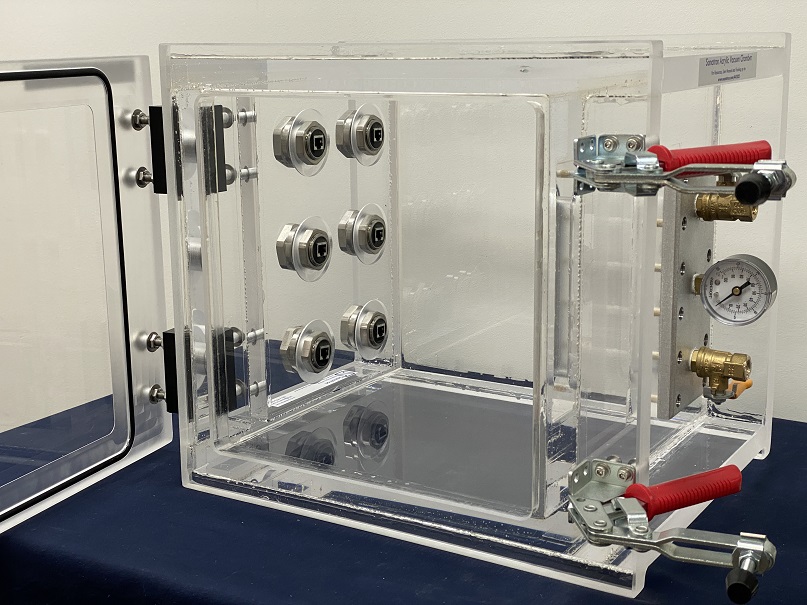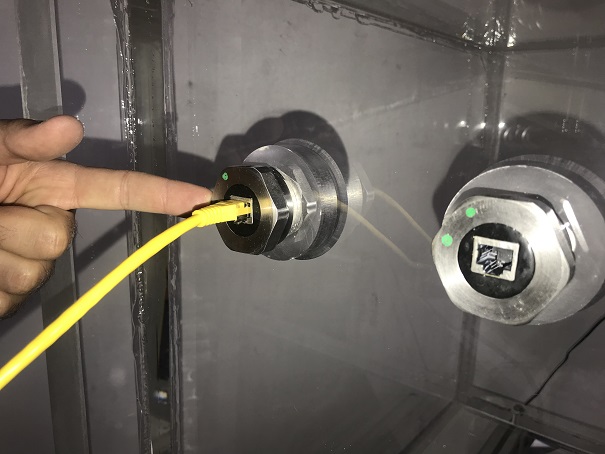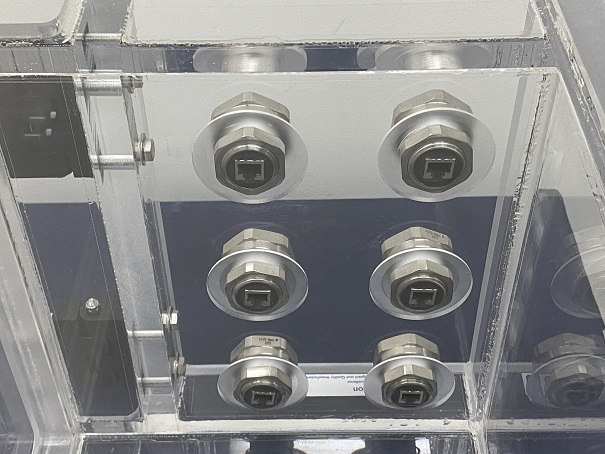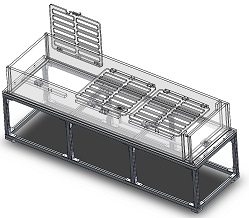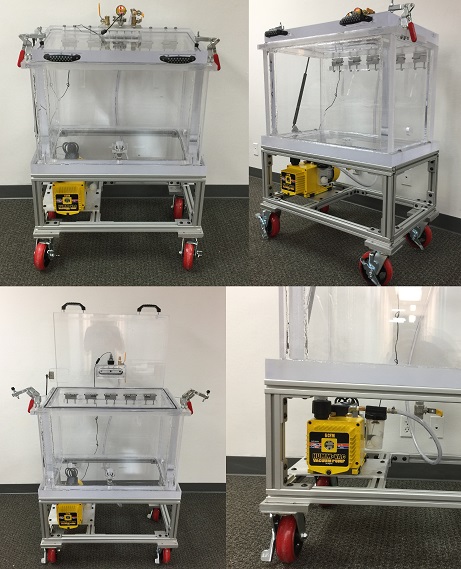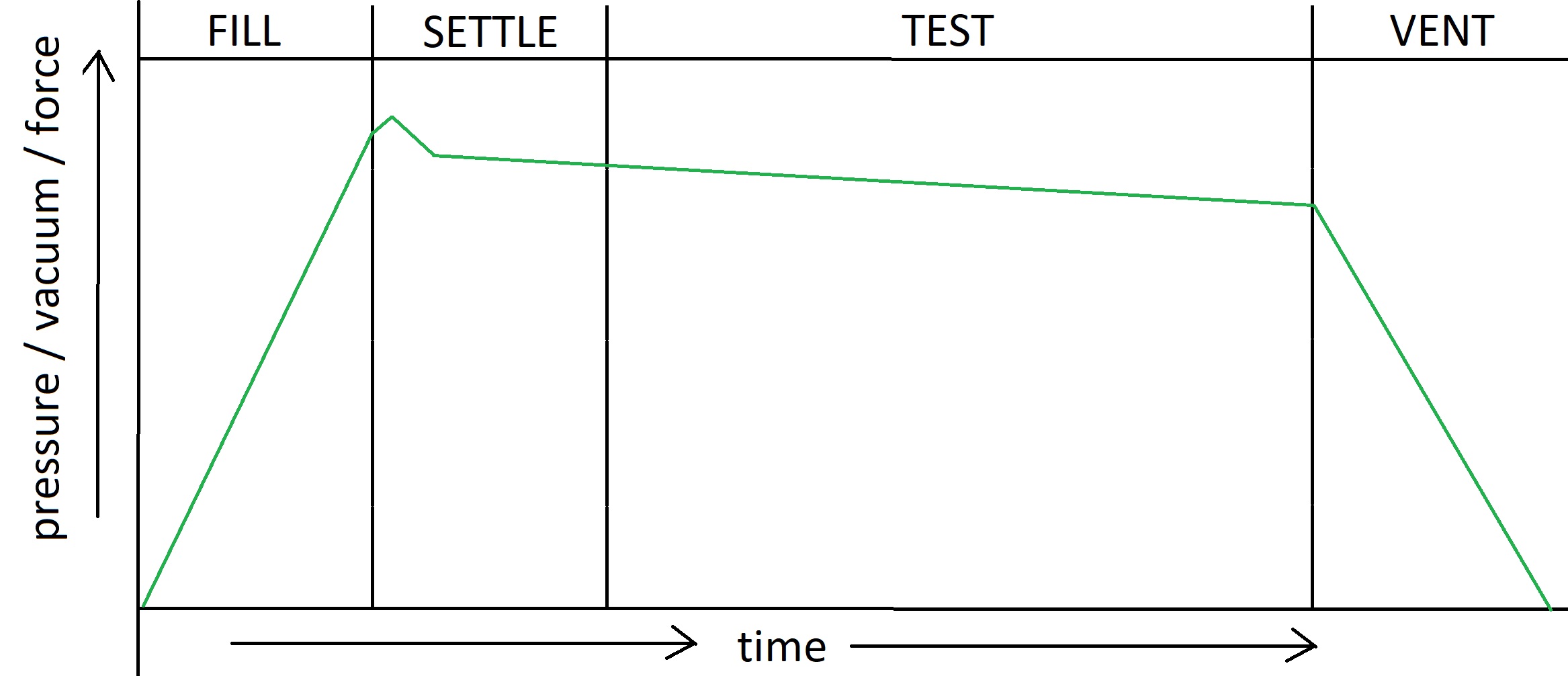Ethernet Vacuum Feedthrough, CAT5,CAT6, RJ45, Panel Hole, Dual Sided Connector
Additional Images of Ethernet Vacuum Feedthrough
Our Ethernet Vacuum Feedthroughs can be customized and applied in any way imaginable. Please take a look at additional images of our Ethernet Vacuum Feedthroughs and it application examples.
Product Specifications
Features
Description
An Ethernet Vacuum Feedthrough is a component that will enable you to run ethernet cables into the vacuum chamber from the outside to the inside of the chamber during vacuum operations without compromising the vacuum.
This particular ethernet vacuum feedthrough connects through a panel hole onto your vacuum chamber. The inside diameter of the panel hole is 1.25 inch while the panel depth must be between 0.10 inch and 0.84 inch. Once the feedthrough is placed into the hole, a locknut is used to tighten this component and to compress the O-Ring present on the inside of the flange to create an air tight seal.
This vacuum feedthrough is compatible with RJ45, CAT5, CAT6, and ethernet LAN connections. Feel free to contact us if you have any more questions.
We have many more resources on our website that you should check out
We treat our customers well by Over-Delivering on our Promises (reason why we are Highly Rated on Google My Business). You should check out some of our other items we carry; click on the links below.
